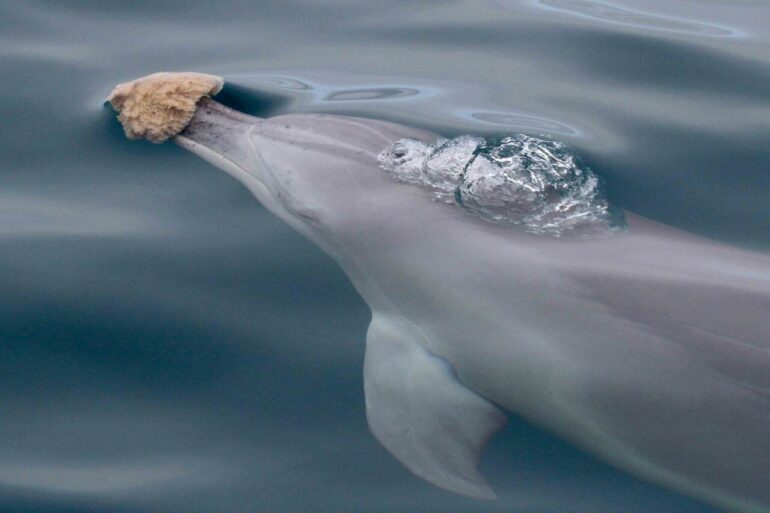Murdoch University marine biologist Dr. Delphine Chabanne has discovered evidence of male alliance in Indo-Pacific bottlenose dolphins, the first time such behavior has been recorded outside of Western Australia’s famed Shark Bay.
A Research Fellow at the Centre for Sustainable Aquatic Ecosystems at Murdoch’s Harry Butler Institute, Dr. Chabanne has been studying Perth’s dolphins for more than a decade.
Her recent discovery suggests male alliances are not unique to the Shark Bay dolphin population and extends the understanding of the evolutionary and ecological processes that drive alliance formation.
Dr. Chabanne used long-term photo-identification records and social analyzes to assess whether such alliances also occur in smaller and more isolated settings, and documented behaviors that showed the male alliances occur in a reproductive context.
A male dolphin named Bottomslice was observed performing a “rooster strut,” a sexual display in the presence of estrus females, during which the male bobs his head up and down at the water surface while moving forward.
The dolphins would also help each other find females and were seen guarding their potential mates.
“Often, as we observe a group with a female and a male alliance, the female will be in front while the males will follow behind or on each other side of the female,” Dr. Chabanne said.
“Our work revealed strong social bonds and long-term, non-random associations among individual males.
“Behavioral observations of alliances interacting with potentially receptive adult females, and exhibiting sexual display behaviors near females, suggest that these alliances occur in a reproductive context.
“Our findings are significant and exciting because this is the first formal analysis indicating the occurrence of male alliances outside Shark Bay along the vast western coastline of Australia.”
The Swan Canning Riverpark is home to a small community of 12 adult, six juvenile, and six calf Indo-Pacific bottlenose dolphins that are year-round residents.
From June 2011 to March 2017, Dr. Chabanne conducted 187 surveys and tallied 250 useable dolphin group sightings from 304 recorded.
The findings have been published in Mammalian Biology.
More information:
Delphine B. H. Chabanne et al, Evidence of male alliance formation in a small dolphin community, Mammalian Biology (2022). DOI: 10.1007/s42991-022-00295-7
Provided by
Murdoch University
Citation:
Swan River dolphins form ‘bromances’ to secure females, study finds (2022, December 2)
